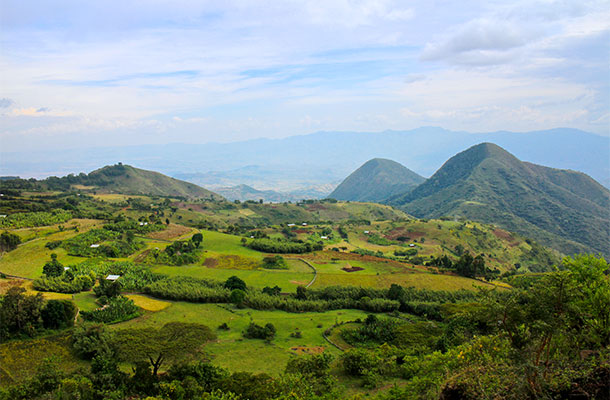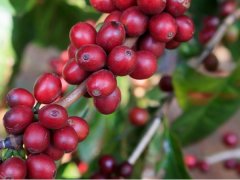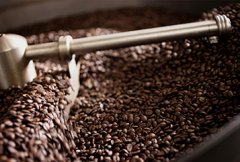Explore the origin of coffee-Ethiopian coffee producing area Sidamo, where is Sidamo?

For professional baristas, please follow the coffee workshop (Wechat official account cafe_style)
Ethiopia is known as the birthplace of coffee. It is an important producing area of fine bean coffee nowadays. It is also a treasure land in the hearts of many coffee lovers. Some people say that Ethiopia is the "Garden of Coffee Eden", where Arabica coffee trees were first discovered in the world. Coffee is grown almost everywhere in Ethiopia, with thousands or even tens of thousands of coffee varieties.
In this tropical country, about 15 million people are engaged in coffee production-related industries, of which about 1.1 million are coffee farmers. More than 90% of Ethiopia's farms or cooperatives are grown in small areas, and most of the coffee produced is traditional Arabica varieties. Ethiopian coffee is recognized as a major producer of both quality and output in the world. The annual output of coffee is about 350000 tons, and more than 70% of it is exported to countries around the world, accounting for more than half of the GDP of the country. It is a very important export agricultural product.
In eastern Africa lies the vast Ethiopian plateau, which ranks sixth in the world in average altitude, so it is known as the "roof of Africa". In its territory, the East African Rift Valley runs through the central region, dividing it into east and west walls, while deserts and semi-deserts account for 28% of the territory, with many rivers and lakes, forming a diverse geographical environment and hydroclimate, so the coffee flavor of Ethiopia is not only multi-element, but also very rich.
Ethiopia is located between 3 and 14 degrees north latitude, with coffee trees covering an area of nearly 600000 hectares. There are two rainy seasons a year in the south and east, while there is only a single rainy season in the west. The distribution of rainy seasons is different, so that coffee is harvested in Ethiopia all the year round. Coffee grows between 550m and 2750 meters above sea level. The western and southern soils are volcanic rocks, mineral-rich soils are slightly acidic, and the average annual temperature is 15-25 degrees Celsius, making it an excellent growing environment for Arabica.
There are four major coffee systems throughout the territory:
(1) forest coffee (2) semi-forest coffee (3) pastoral coffee (4) farm coffee
95% of the coffee in the country is cultivated organically without fertilization or medicine, but it has not yet been internationally certified.
Use different ways to treat coffee beans. Sun or water washing is available in each district, and different treatment methods also affect the flavor. Ethiopia traditionally uses the ancient sun treatment, but since the introduction of water washing technology in 1972, it has gradually increased the ratio of water washed beans for more than 30 years. At present, the sun method accounts for about 80%, and water washing accounts for about 20%. Sidamo and Yirgacheffe are mainly washed by water and supplemented by sunlight, while Limmu and Teppi are mainly washed by water. The sun-dried beans are mainly Harar, Jimma, Lekempti and Illubabor.
Important Notice :
前街咖啡 FrontStreet Coffee has moved to new addredd:
FrontStreet Coffee Address: 315,Donghua East Road,GuangZhou
Tel:020 38364473
- Prev

Coffee Bean Brands in eight Coffee producing areas in Ethiopia ranking Sidamo Coffee Taste characteristics
For the exchange of professional baristas, please pay attention to the coffee workshop (Wechat official account cafe_style). The Guji producing area of southern Ethiopia is adjacent to the Sidamo and Gedeo areas, with towering mountains, highlands, plateaus, valleys and plains. The geology of this area belongs to the volcanic soil with rich nutrients and good drainage, and the depth of the soil is close.
- Next

Ethiopian Yega and Sidamo Coffee what kind of coffee is Sidamo?
For the exchange of professional baristas, please follow the coffee workshop (Wechat official account cafe_style) country: Ethiopia Origin: located in the Yegashafi producing area of Sidamo. Variety: Ethiopian native species taste: rich and unique aromas of lemon and jasmine. Functional characteristics: sweet orange Ethiopian boutique coffee beans, Sidamo Valley Guji candle producing area (Shaki
Related
- Detailed explanation of Jadeite planting Land in Panamanian Jadeite Manor introduction to the grading system of Jadeite competitive bidding, Red bid, Green bid and Rose Summer
- Story of Coffee planting in Brenka region of Costa Rica Stonehenge Manor anaerobic heavy honey treatment of flavor mouth
- What's on the barrel of Blue Mountain Coffee beans?
- Can American coffee also pull flowers? How to use hot American style to pull out a good-looking pattern?
- Can you make a cold extract with coffee beans? What is the right proportion for cold-extracted coffee formula?
- Indonesian PWN Gold Mandrine Coffee Origin Features Flavor How to Chong? Mandolin coffee is American.
- A brief introduction to the flavor characteristics of Brazilian yellow bourbon coffee beans
- What is the effect of different water quality on the flavor of cold-extracted coffee? What kind of water is best for brewing coffee?
- Why do you think of Rose Summer whenever you mention Panamanian coffee?
- Introduction to the characteristics of authentic blue mountain coffee bean producing areas? What is the CIB Coffee Authority in Jamaica?

